Marianne Enhorning mixes her love of nature and the human figure with subtle architectural elements to create dreamlike paintings that establish her place in her family’s artistic heritage

Marianne Enhorning: architecture to art
Marianne Enhorning: architecture to art
Marianne Enhorning mixes her love of nature and the human figure with subtle architectural elements to create dreamlike paintings that establish her place in her family’s artistic heritage
Marianne Enhorning dances around her new Comox Avenue studio/gallery, adding brush strokes to multiple paintings she’s working on simultaneously, sometimes measuring herself up against a life-sized canvas as if she’s trying to connect with the figure of a woman in motion, sensing the image’s next movements.
Enhorning is preparing for an important exhibition in San Diego, one that might result in an American tour of her recent work, a series exploring the beauty and strength of women.
She’s got a dozen new paintings on the go and divides her attention among them, moving gracefully around jars of brushes, paint cans, easels and paint-stained buckets.
The stereotypically messy studio area strikes a sharp contrast to her gallery, where a clean, simple design reveals Enhorning’s Swedish heritage. The gallery would not look out of place in an IKEA showroom.
But it’s no accident that Enhorning’s gallery is well organized and attractive. She has a degree in architecture and worked in that field for 25 years designing houses and small commercial buildings. She spent 10 years in private practice in Vancouver before moving to the Comox Valley, where she continued to do architectural design. She also worked off and on for a few years with Comox architect John Chislett.
There’s a subtle architectural influence in much of Enhorning’s work that wouldn’t be obvious without knowing her background. Whether she’s painting women, dancers, landscapes or communities of people, they are often framed in vertical linear shapes — trunks of trees, lines of people, stems of flowers or herds of unicorns — and the human figures provide a sense of scale to the grandeur of nature.
“In architecture, I loved the design, and was always looking at the art aspect. The technical side is so unlike me. There are so many rules and bylaws and restrictions. And in the end, it’s not really your own work. You’ve been compromised by all the limitations,” She says.
By contrast, Enhorning says that painting is “completely free.”
“When I’m painting there’s no client, no budget, no rules. I can do anything. Nothing is right or wrong, and nobody can say it’s wrong,” she says.

Art has always been a part of Enhorning’s life, but she didn’t always believe she was an artist.
She counts her grandmother, Louise Peyron, as her greatest influence. Peyron was a famous Swedish artist, who studied in Paris during the Lost Generation of Left Bank artists, writers and ex-pats around the 1920s, a community that included Gertrude Stein, Picasso and Hemingway.
But it was Enhorning’s older brother, Ulf, who their grandmother took under her wing. He became “the artist” in the family.
A SPECIAL PAINTING BROUGHT MARIANNE ENHORNING’S PARENTS TOGETHER: Read this story below
“So even though my parents had tons of art in the house, every room was like a gallery, and art was all I ever knew, my brother was ‘the artist.’ I didn’t think I could do it,” she says.
Still, Enhorning studied her grandmother’s work so intensely that those who know Peyron’s work can now see Peyron’s influence in Enhorning’s paintings. “She was my teacher, I feel it so strongly,” she says.
Enhorning only began painting seriously about five years ago. She was working exclusively with her own architectural clients, and doing some painting while juggling her role as a mother to two young children.
Then she was offered a chance to rent some studio space at Courtenay’s Art Alchemy by her friends Lucy Schappy and Helen Utsal. Enhorning thought she would try it out for a month.
“I painted for a month and I couldn’t stop,” she says. “It was so obvious that I had to paint.”
Yet, she still didn’t consider herself a full-time artist. Even when her work sold well at a small show at Art Alchemy with two other painters, who were also renting space there, she didn’t believe it.
“I thought that’s not real. That’s just my friends being nice to me, buying my painting because they felt sorry for me or something,” she says. So Enhorning kept doing architectural projects, even though she was selling more and more art work.
“Eventually, the counselor I was seeing told me to ‘just keep painting’ and not to come see her anymore,” she says. “Painting had become my therapy.”
So, she did. And now says that “even if a dream job in architecture came along today, I would say no.”
An emotional exercise
Enhorning describes her painting process as lying down in a grassy field looking up at the passing clouds on a summer day, seeing them change shapes and transition from one thing into something else. She turns her panels upside down and sideways, and looks at them from different angles, trying to discover where they are going to go next.
“I used to think that when authors said they don’t know where their characters are going until they write it, that was hokey. But it’s not. Now I understand it,” she says.
“The act of creating comes from the soul,” she says. “I get very emotional, I feel the experience of creating so deeply.”
For her series on women, Enhorning stands up close to the panels made by her husband at her exact height. She puts herself in the painting’s shape, trying to experience how the woman might feel, how her body might be moving. That often moves her to tears.
It’s so personal, and I feel fortunate to be able to do it,” she says.
Enhorning grew up with three older brothers, and she wanted to be a boy. She was a tomboy and thought girls were boring. They couldn’t match the thrill-seeking action of boys.
“But now, in my 50s, I realize the strength and beauty and power that women have. It’s taken me until now,” she says.
For Enhorning, the emotional process doesn’t end when a painting is finished.
“It’s hard to understand that people will spend money to have one of my paintings in their life. Obne client told me that my painting makes her feel so happy, so alive. It’s mind boggling,” she says.
Where to see Enhorning’s work
Vancouver Island collectors have purchased the bulk of Enhorning’s work, though she has buyers in Vancouver and Toronto, and is represented by a gallery in Waterloo, Ont. She sells through galleries as diverse as the Salish Sea Market in Bowser, Embellish, an interior design store in Duncan. She will be the featured artist at the Stock Home gallery in the Kitsilano neighborhood of Vancouver. Her work can be seen locally at her gallery and the Blackfin Restaurant in Comox.
Unlike some artists, Enhorning enjoys doing commissions, partly because it appeals to her architecture background and love of design. She uses 3D software from her former house design career to mirror a client’s room and create graphics of different size painting on the wall. Then she creates at least three different paintings for the customer to choose.
You can view Enhorning’s work on her website, enhorningdesign.com, on Instagram @enhorning design or at her public gallery in Comox, 1671 Comox Ave, from 11 a.m. to 3 p.m. Monday through Friday.
Next exhibition: Miami, Florida
Since Decafnation visited with Enhorning in October, she had a successful show in San Diego, selling seven large paintings and acquiring two commissions. It was so successful that her series on women was shipped from San Diego to Miami, Florida, for an exhibition in early December. She’s also adding new work for the Miami show.
How a special painting brought her parents together
Just how deep is Marianne’s Enhorning’s connection to art? Well, without art, she might never have existed.
It was a painting by her grandmother, Louise Peyron, that brought Enhorning’s parents together.
Here’s how Marianne Enhorning’s mother tells the story
 “My mother was an artist. Her best friend was a journalist for one of the Swedish daily newspapers. She had a younger brother who was a doctor. He wanted to purchase some art, and asked his sister if she could arrange for him to see some of her friend’s work.
“My mother was an artist. Her best friend was a journalist for one of the Swedish daily newspapers. She had a younger brother who was a doctor. He wanted to purchase some art, and asked his sister if she could arrange for him to see some of her friend’s work.
“So, he was invited to visit my mother in her studio. Looking over her various paintings, he selected one, and that was a portrait of a young girl.
“Oh, my mother said, that is my daughter, and I normally don’t sell portraits of my children. But, since you are my best friend’s brother, I might be willing to make an exception.
“So, he bought the painting of me, took it home, put it on his wall, and began to think that he would like to meet this girl ….
“Soon after, my mother gave a Christmas party, and among the guests were, of course, her best friend with her brother.
“I had helped with preparations for this party, baking various cakes and cookies, and this young man showed an enormous interest in these cookies, asking me to describe in detail how they were made.
“So, I told him! The rest is history!”
Marianne Enhorning: architecture to art
The Decafnation lists its favorite books read during 2017
On January 1 every year, the Decafnation presents its annual collective Book Report. Thanks to everyone who took the time to share short reviews of books they enjoyed during the past year.
Book reports from the DecafNation — 2016
On Jan. 1 every year, the DecafNation presents its annual collective Book Report. I know what you're thinking, "Hey, this is the first time I've seen this Book Report." You're right, because the DecafNation didn't exist on Jan. 1, 2016. But we plan to make this an...



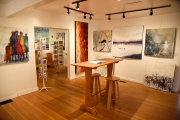
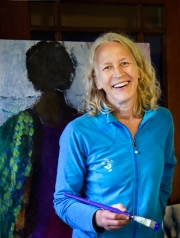
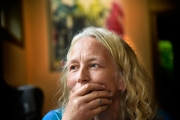
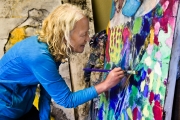


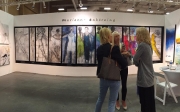
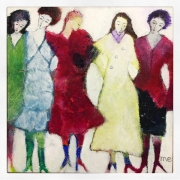
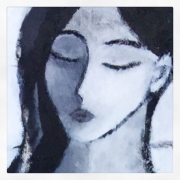
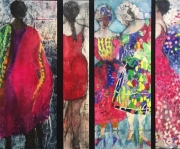
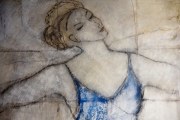
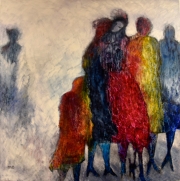


 Ken Adney — How We Got to Now: Six Innovations That Made the Modern World by Steven Johnson. And I’m currently re-reading Robert Heilbroner’s The Worldly Philosophers, which holds up as a simple introduction to economic thought (and the economists).
Ken Adney — How We Got to Now: Six Innovations That Made the Modern World by Steven Johnson. And I’m currently re-reading Robert Heilbroner’s The Worldly Philosophers, which holds up as a simple introduction to economic thought (and the economists). Gordon Mason — The Shadow of Kilimanjaro, on foot across east Africa by Rick Ridgeway. A wonderful journey through a fascinating area in Kenya, Tsavo National Park. An incredible journey on foot from the summit of Mount Kilimanjaro to the Indian Ocean, offering a rare view of East Africa as it is today and how it once was before the inclusion of European civilization.
Gordon Mason — The Shadow of Kilimanjaro, on foot across east Africa by Rick Ridgeway. A wonderful journey through a fascinating area in Kenya, Tsavo National Park. An incredible journey on foot from the summit of Mount Kilimanjaro to the Indian Ocean, offering a rare view of East Africa as it is today and how it once was before the inclusion of European civilization. Richard Schmidt — Sing, Unburied, Sing By Jesmyn Ward. A story about the love-hate tensions between races as a black woman and her children take a road trip through Mississippi to pick up her white husband from prison.
Richard Schmidt — Sing, Unburied, Sing By Jesmyn Ward. A story about the love-hate tensions between races as a black woman and her children take a road trip through Mississippi to pick up her white husband from prison.